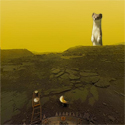|
When you think of the Midwest, you probably think of vast, empty fields of corn...and you'd be mostly correct. But if you look around, there's some neat short trails and day hikes scattered throughout the region. Share your favorite midwestern hiking trails here, because we need the exercise! I'll mostly post about stuff in southern Illinois and southeastern Missouri since that's my home turf. I'm also a geologist, so I'm going to wander into natural history and stuff when I post. I'll start off with Illinois' Giant City State Park, located in Makanda, IL. The park straddles a geologic feature known as a cuesta. Cuestas form when the rock layers of a region are gently tilted, causing erosion to create an escarpment on the up-dip side, and a gentle slope on the down-dip side. The rocks in southern Illinois are tilted because they sit on the edge of a large bowl in the crust called the Illinois Basin. From about 600 million years ago to 300 million years ago, the Illinois Basin was flooded by a large inland sea. At the time, the region sat much closer to the equator. For long periods of time, stretches of shoreline would develop into limestone platforms and islands, similar to the Bahama Banks today. Rivers flowed into it occasionally choking off limestone production and depositing thick layers of sand and clay instead. In more modern times, the area has sat much further above sea level, allowing erosion to strip off many thousands of feet of rock. Erosion has had a hard time chipping away at the sandstone that's exposed in the park, because while it was buried it soaked in iron-rich groundwater. Iron oxides have precipitated between the sand grains, creating a hard cement that makes the rock difficult to break. Most of the rock features in Giant City are bluffs and escarpments created as erosion slowly eats into this resistant sandstone layer. The park is named for a feature that was created when a sandstone bluff cracked down the middle. This sandstone sits on a layer of softer clay. As the clay eroded out from underneath it, the sandstone layer could no longer support its own weight and broke. Over time, this broken chunk of rock has slowly slid downhill on the clay, opening up a "street". 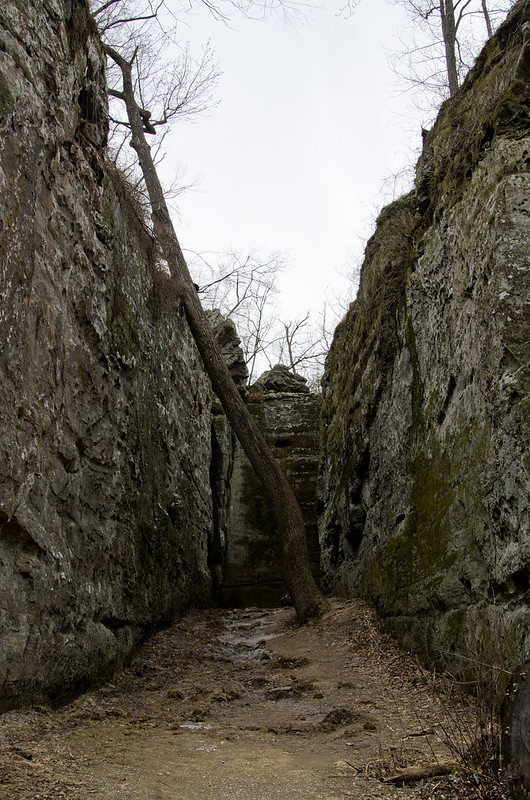 Glaciers were once active around the area. There are a lot of boulders in the area, some local, some from as far away as Canada. Here's a local one that ended up in a precarious spot. This one appears to come from the top of the bluff, and was likely moved when an ice dam impounding a meltwater lake failed. The force of water started pushing it, only to stop when it ground to a halt on the lip of another rock.  Another area of the park contains an area where part of the escarpment sticks out into the surrounding lowlands. This point was walled off by whatever Native American tribe lived in the region during the Late Woodland Period (600-900 AD), although the rationale is unknown. The area is naturally defensible so some archeologists have advocated that this was a fortification, while others have argued that it was part of a ceremonial site. Unfortunately, a lot of the history was lost when the early European settlers pillaged the wall (reportedly 6-10 feet high) for building material for their own homes. The modern trail features a "reconstructed" version built by CCC work gangs in the mid-1930s. 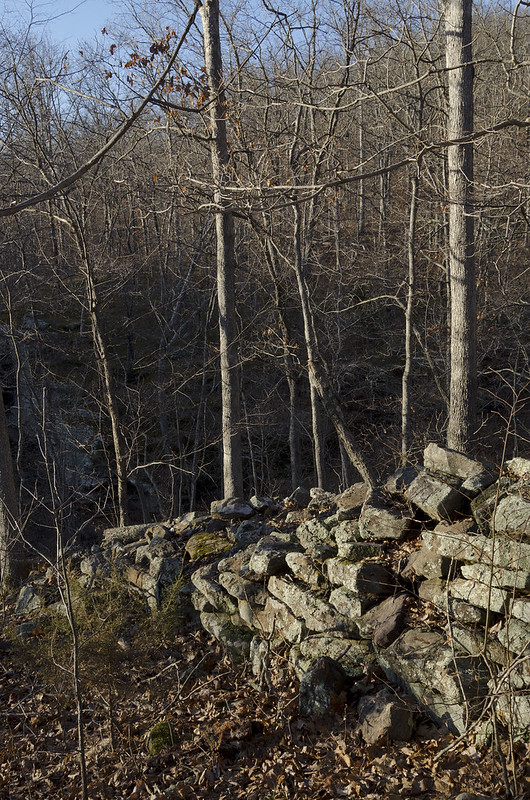 Here's a view of the bluff from the lowlands: 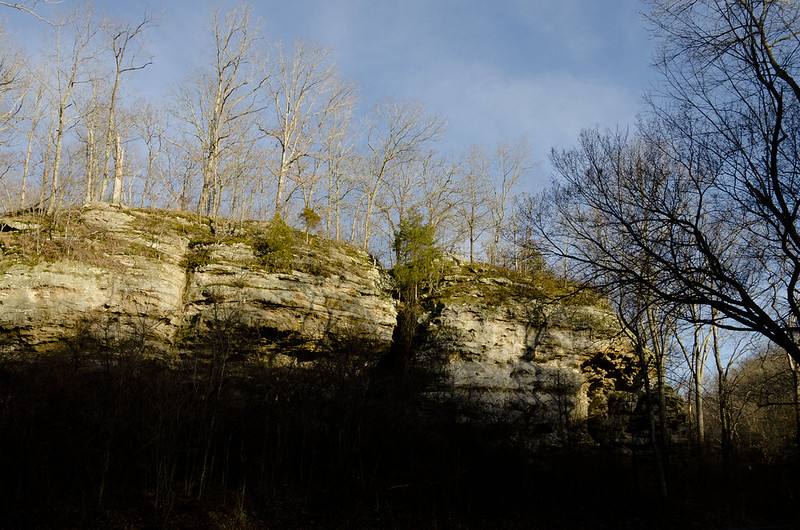 Devil's Standtable is another park feature, a big hoodoo-like column that sits just beside the escarpment. You can climb it from the bottom, but it's easier just to walk along the escarpment at the top and just step over onto it.  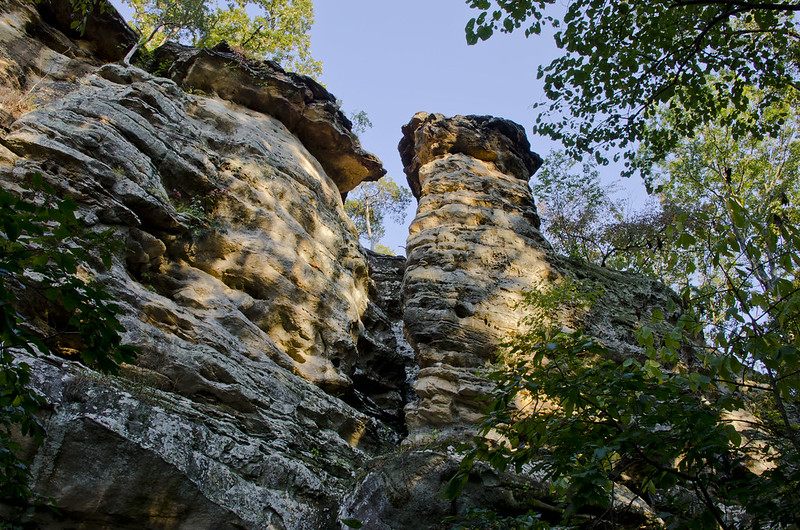 The trail at the bottom is still worth a hike, though, because it has some neat sandstone cliffs: 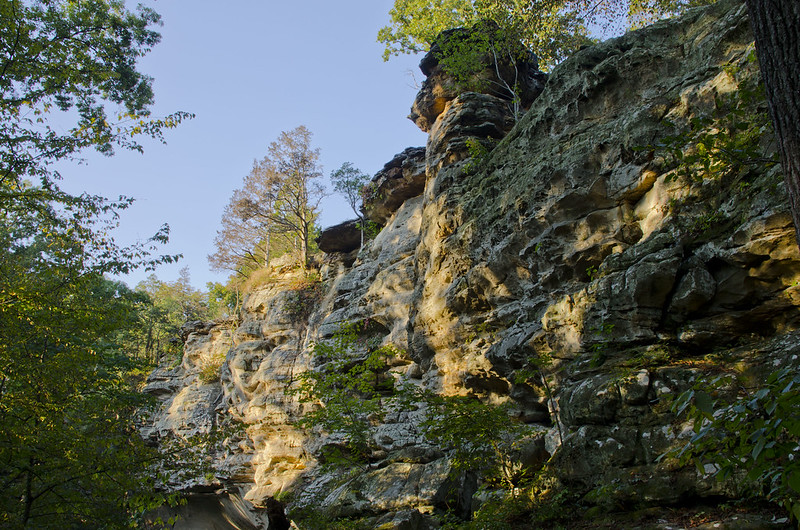 Another cool part about the park is the unusual way in which the sandstone erodes in some areas. 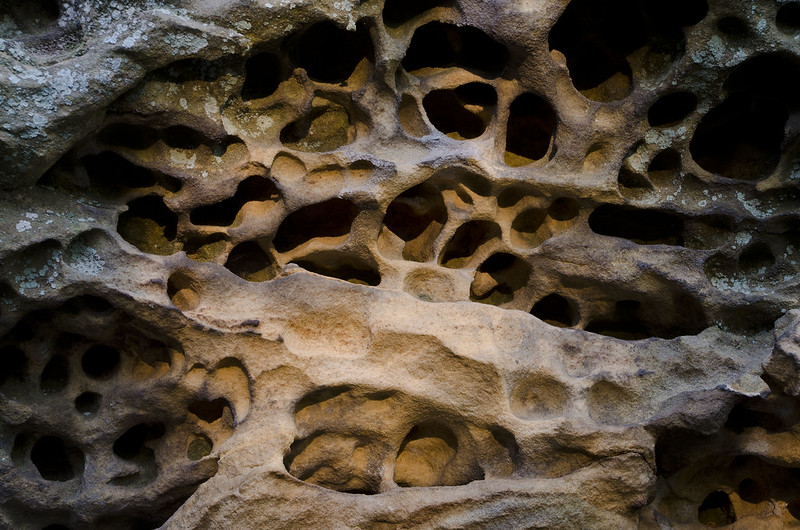 Some pockets of sand weren't cemented together as well, so wind and water have eaten their way into the rock, creating what is known as tafoni weathering. Some areas of tafoni weathering in the park have a more polygonal appearance, these are called "honeycombs". Anyway, it's a neat park, and while it doesn't have any trails longer than 2 miles it's still a fun place to visit if you're in the area.
|
|
|
|

|
| # ? Apr 19, 2024 10:09 |
|
Ahh, the scenic views from being on top of a 10 foot boulder
|
|
|
|
Larry Parrish posted:Ahh, the scenic views from being on top of a 10 foot boulder The Midwest is definitely more of a subtle beauty, but it's beautiful nonetheless. Thanks for the write up, OP. When I have time I'll have to do a bit on northern Wisconsin and the upper peninsula of Michigan, which is where I've done a lot of stomping around.
|
|
|
|
Hiking in the midwest is fine, but where it really shines is boating and biking.
|
|
|
|
like so 
|
|
|
|
What do I hike in Madison, Wisconsin? I have to move there soon.
|
|
|
|
French Canadian posted:What do I hike in Madison, Wisconsin? I have to move there soon. I'm not really sure. Fortunately it's located near the Driftless Region of the upper Midwest. During the last Ice Age the large continental ice masses moved south out of Canada and planed much of the Midwest flat. The Driftless Region escaped that glaciation, so there's a lot of relatively sizable hills that survived. I'd look into state parks near Madison, they usually have the most scenic hiking. Anyway, I'm going to post about Garden of the Gods State Park near Equality, IL in the extreme southeastern portion of the state. The sandstone is a bit different from that found at Giant City. Instead of blocky boulders, it forms soft, rounded cliff faces. This is mostly due to the fact that there isn't as much iron oxide between the sand grains to hold the rocks together. The lack of iron oxide also means that the cliffs are paler in color here. 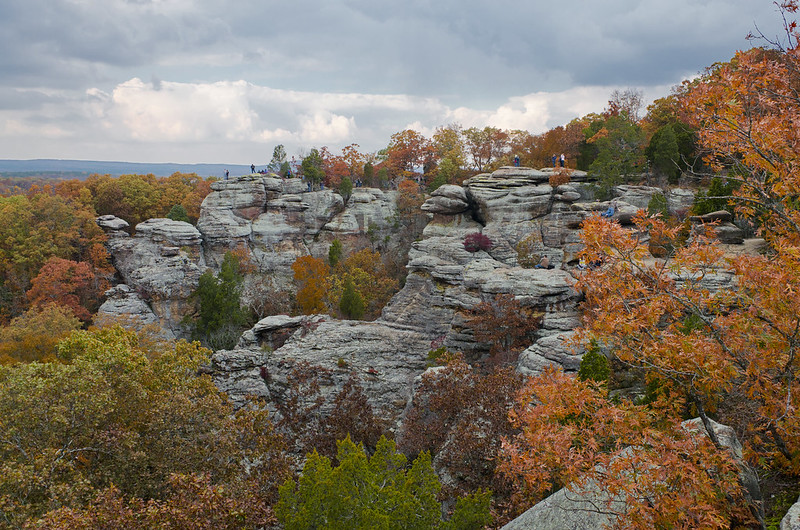 The cliffs at Garden of the Gods are higher than those at Giant City for a couple reasons. The primary reason is that the sandstone unit is a lot thicker. But a secondary reason is because Garden of the Gods sits at the edge of a small uplifted area of rocks called Hicks Dome. This uplift has tilted the rocks a little more steeply, which makes the rocks stick up a little higher above the softer rocks being eroded away underneath. 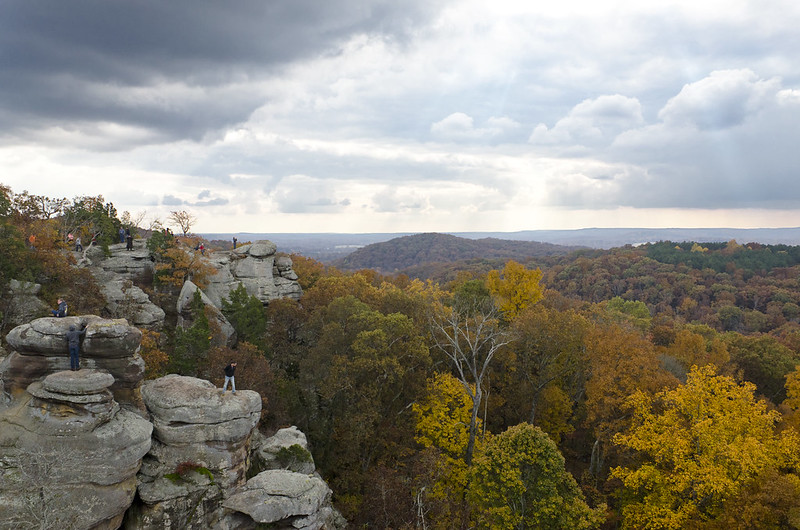 The dome is one of the 38th Parallel Structures, a group of geologic features forming a nearly straight line from Kansas to Illinois. Some geologists have suggested that this is the result of a large asteroid or comet that broke up shortly before hitting Earth, forming a chain of impacts similar to the Shoemaker-Levy 9 impacts on Jupiter in 1995. That said, most of the geologists who support that idea haven't really done any more research beyond looking at a map, because none of the rock features that you would expect to find at an asteroid impact site show up here. A dinky little hill at the center of the dome has collected a mountain of hubris, as geologist after geologist has strutted in thinking they'll be the one to prove it's an impact crater, only for their research to come up empty handed. It's more likely to be a volcanic structure. Volcanic rocks originating in the mantle, similar to kimberlite (the rock diamonds are mined from), are scattered here and there. No diamonds, but they could be a potential future source of rare earth elements. Getting back to the park, it's got some nice overlooks.  And some pretty rocks sticking out of the ground 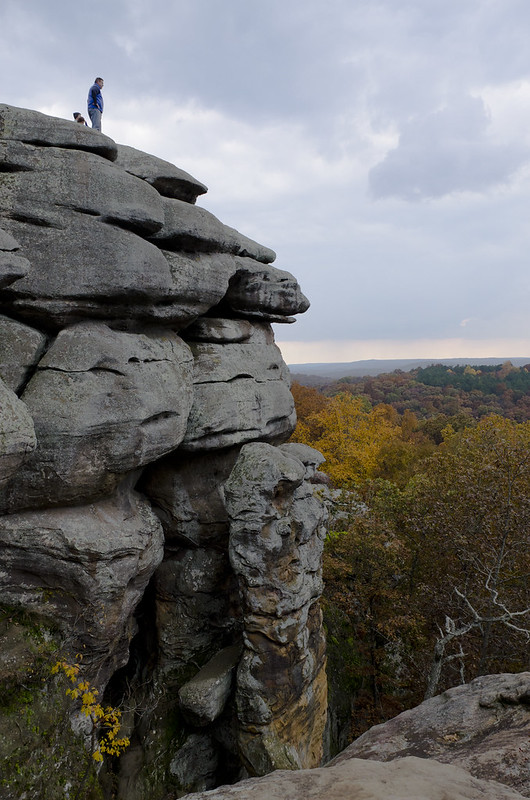 A neat thing to look for at the park is liesengang banding. This is when redox gradients in ancient groundwater systems that flowed through the rock caused iron oxides to precipitate in large, swirly patterns. 
|
|
|
|
French Canadian posted:What do I hike in Madison, Wisconsin? I have to move there soon. Governor Dodge and Devil's Lake are both nice, but small. Drive up to the North Woods or the UP for serious hiking.
|
|
|
|
Garden of the gods, little grand canyon, fern clyffe (where I got hailed on and my dad 30 years prior escaped a flash flood that killed campers) , giant city etc are all cool. Shawnee forest has terrible trees and cool rocks. But going that far south means you aren't in the Midwest anymore, you're south of all the major Kentucky cities
|
|
|
|

|
| # ? Apr 19, 2024 10:09 |
|
French Canadian posted:What do I hike in Madison, Wisconsin? I have to move there soon. I don't know the Madison area well, but the bluffs around La Crosse are well worth a day trip. From Madison it's about a 2 hour drive west on I-90. There are small state parks between the Dells and La Crosse but nothing worth stopping for imo. In La Crosse, the Mississippi Valley Conservancy maintains land for hiking all around the city - the trail on Easter Road is great, as is the old sandstone quarry on county highway FA. Hixon Forest has excellent trails and overlooks. The Myrick EcoPark has some paved paths through the marsh that are scenic, but very level and not particularly long. Perrot State Park by Trempealeau is good too. Hixon's my favorite, most of the trails (there are 5 or so) are 2-3 miles and lead up and down the bluffs. People do a lot of cross country skiing there this time of year. Like X-man cometh said, there isn't a lot of real hiking to be had unless you head north.
|
|
|


